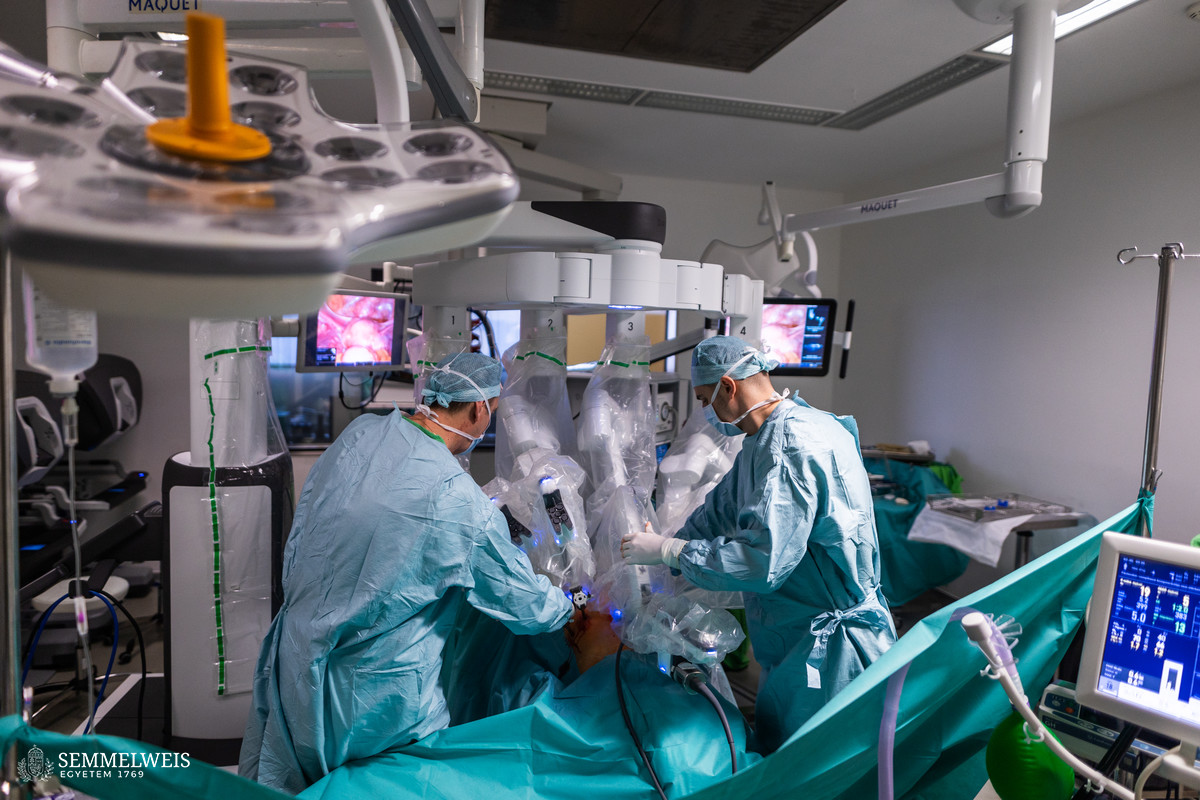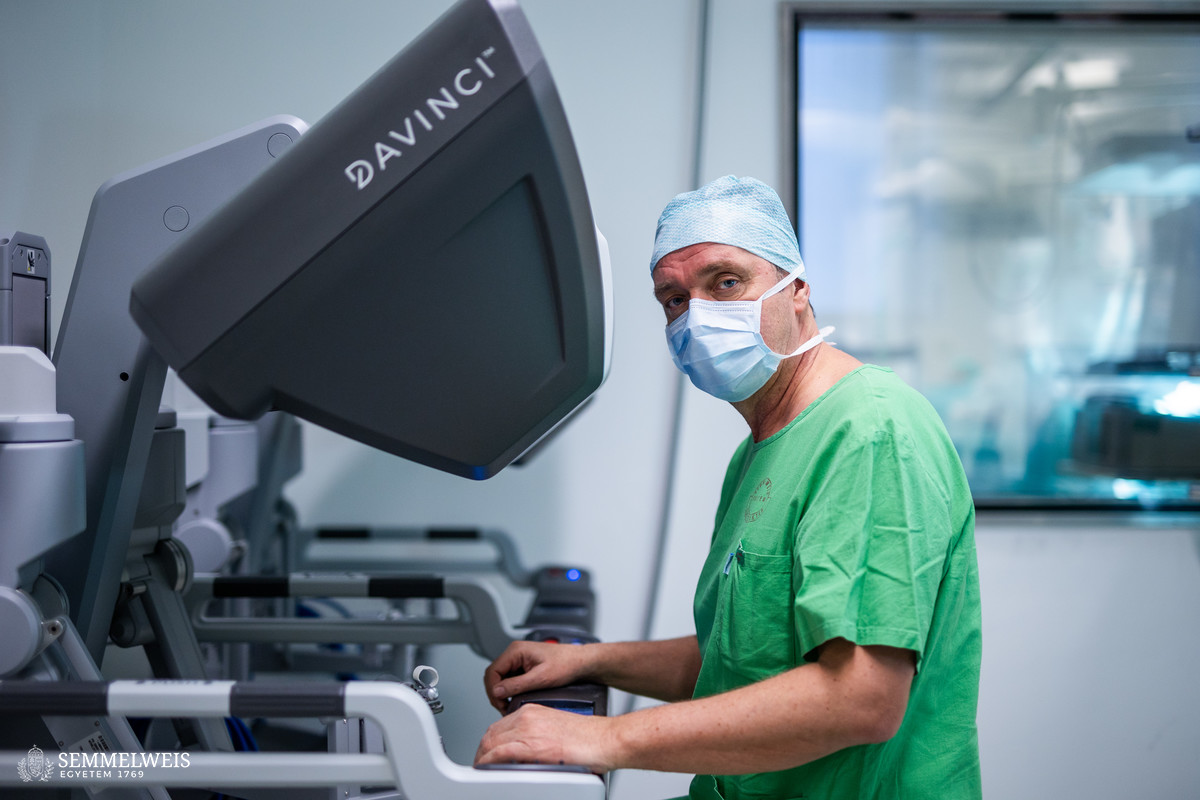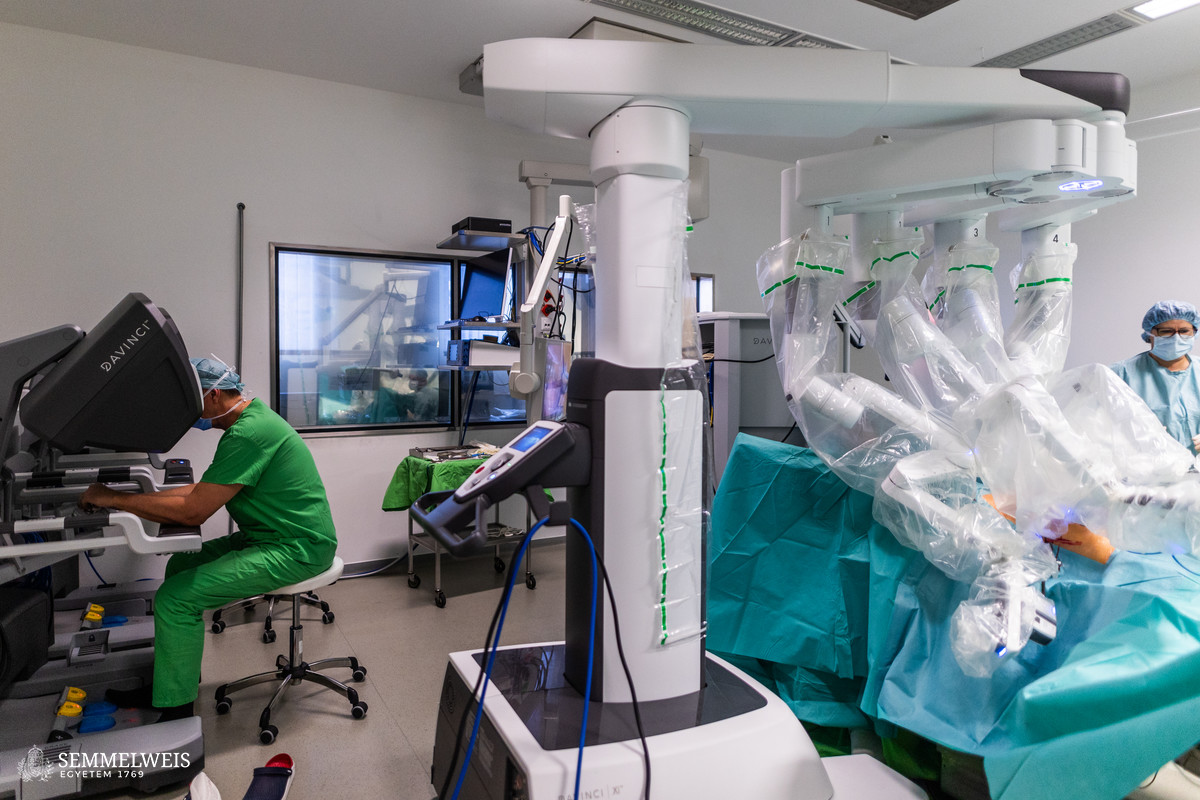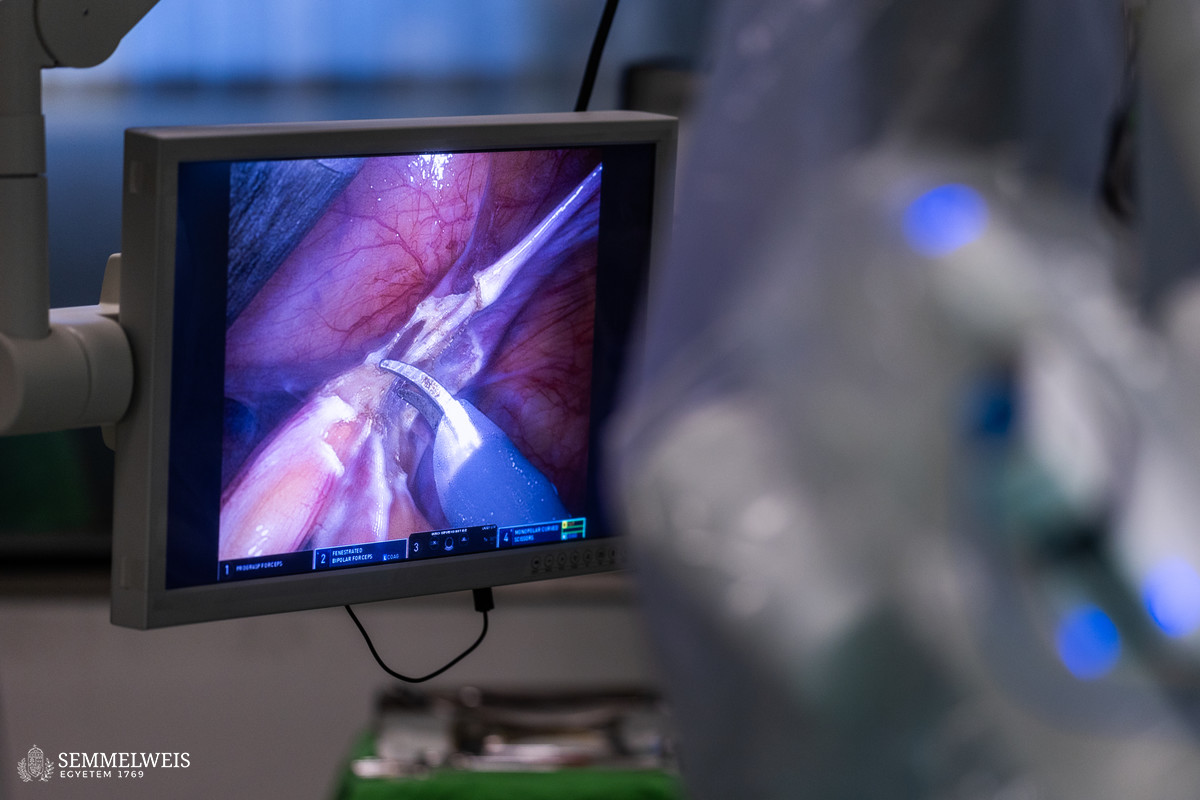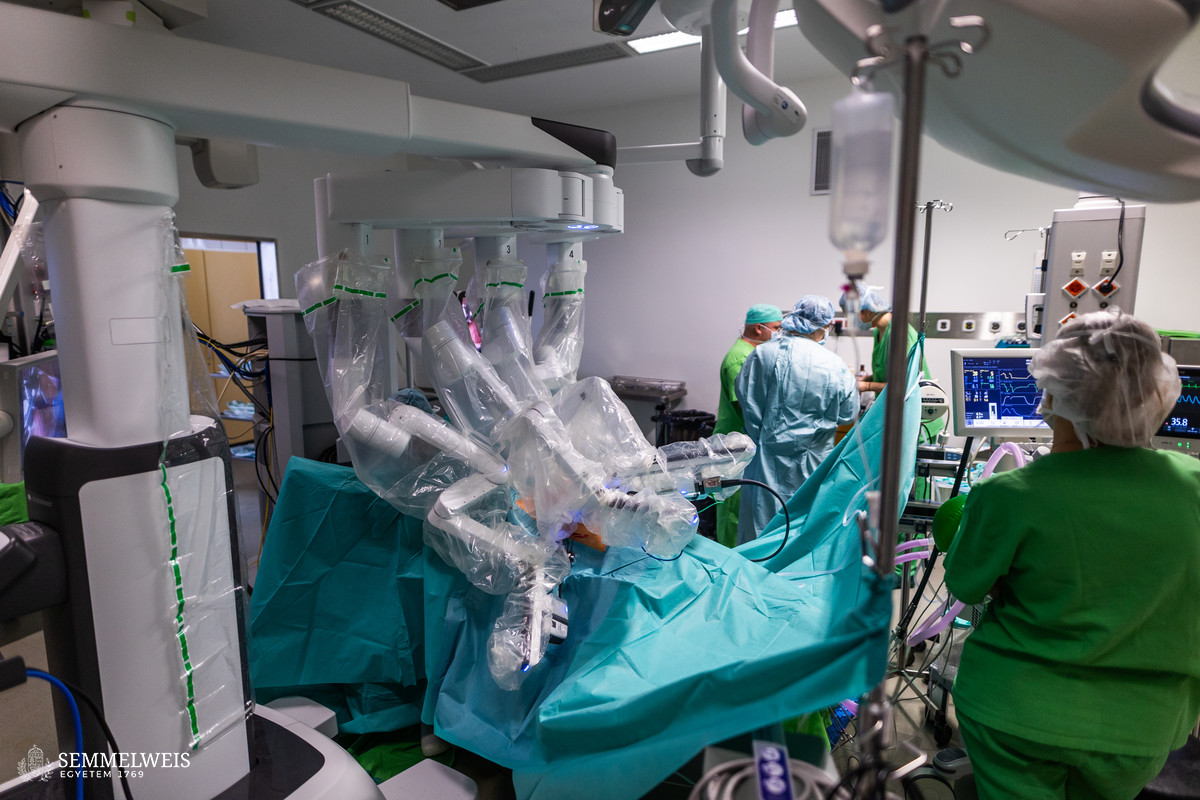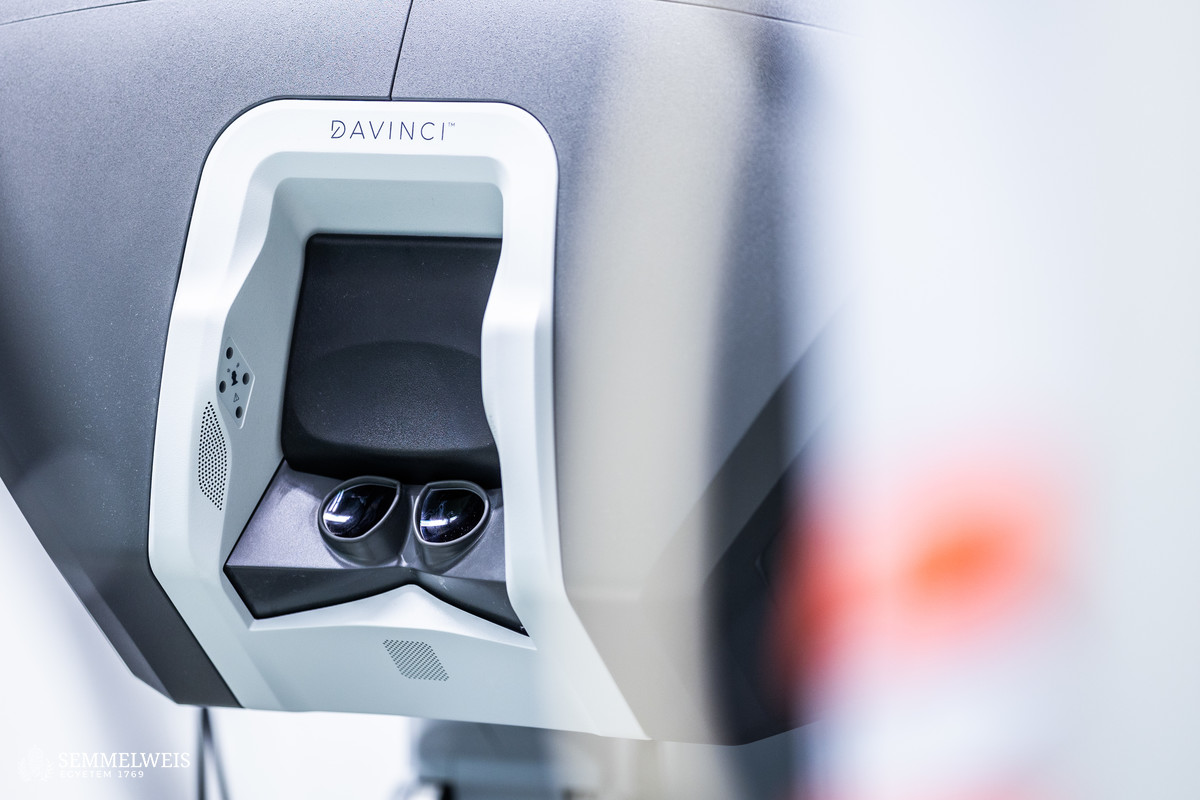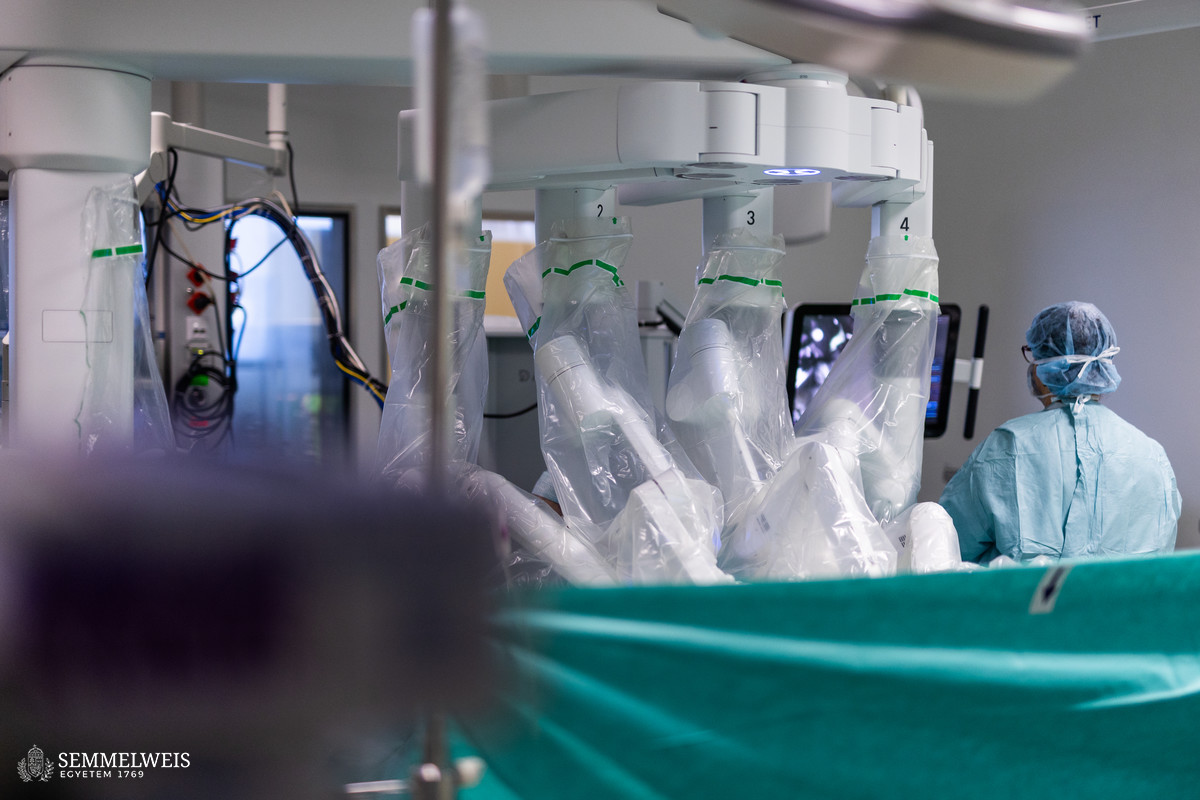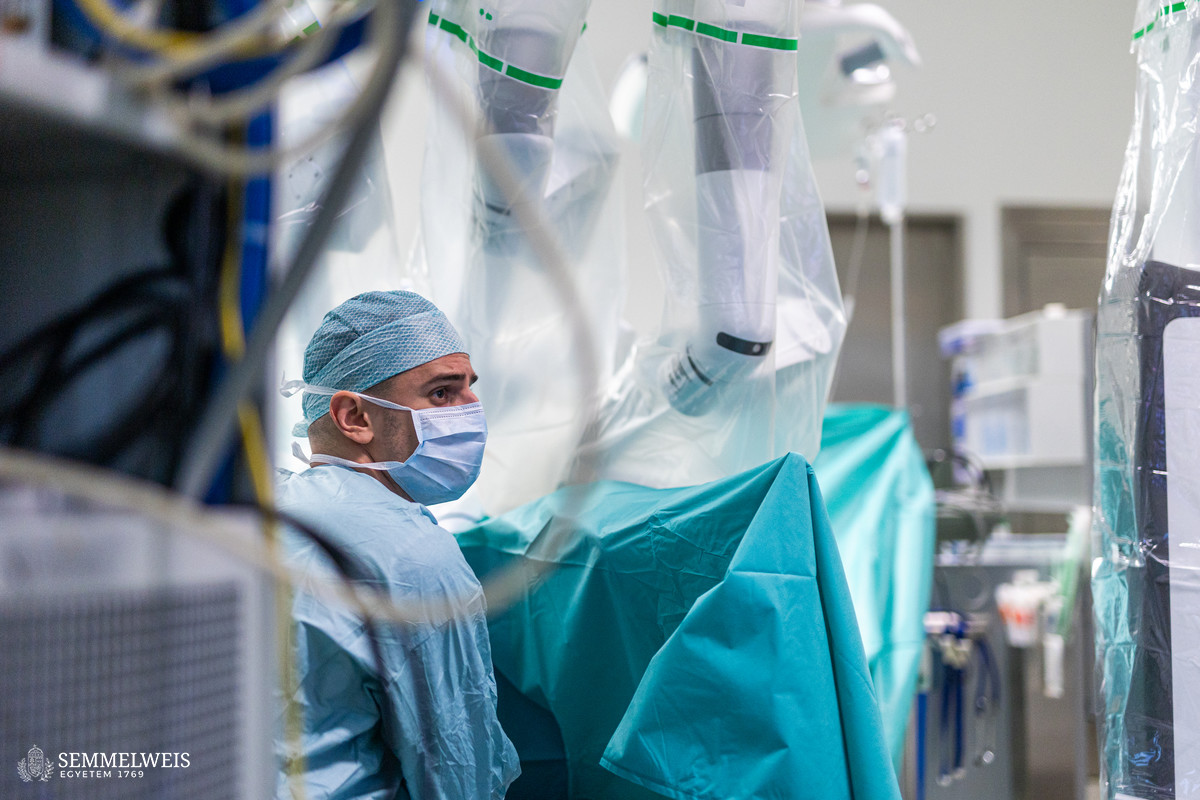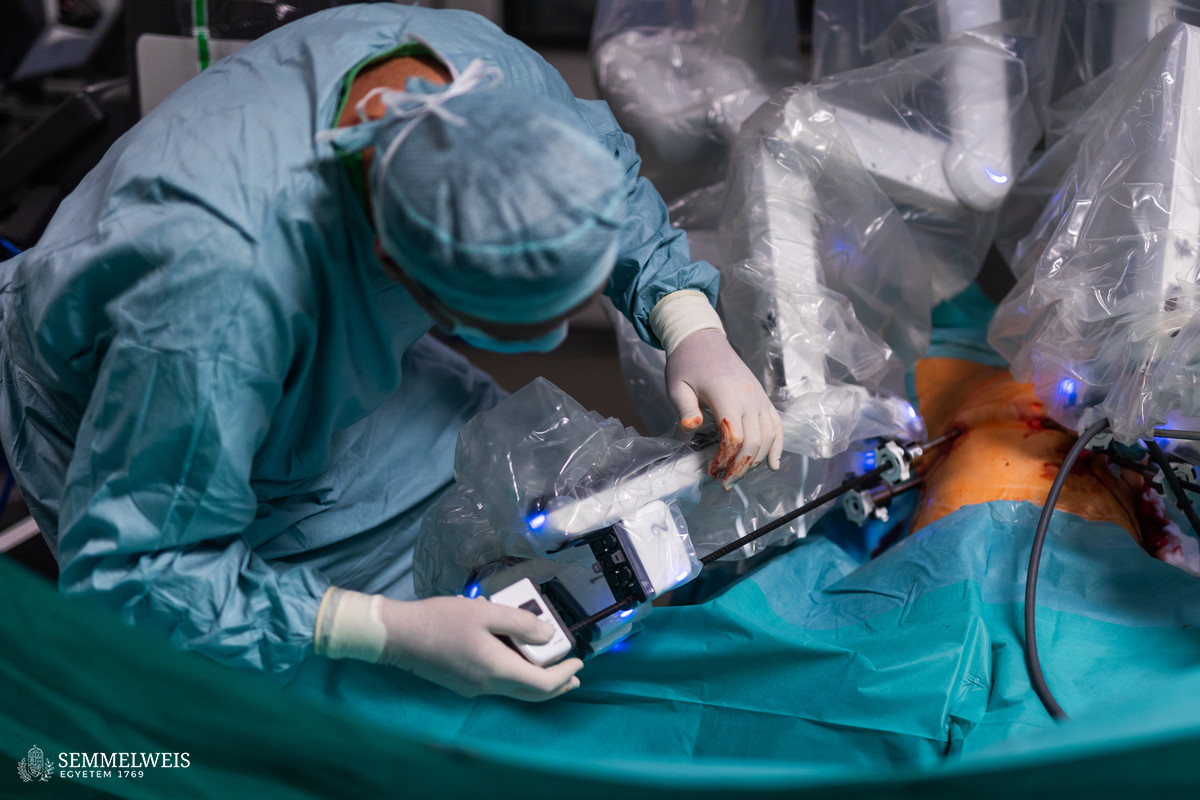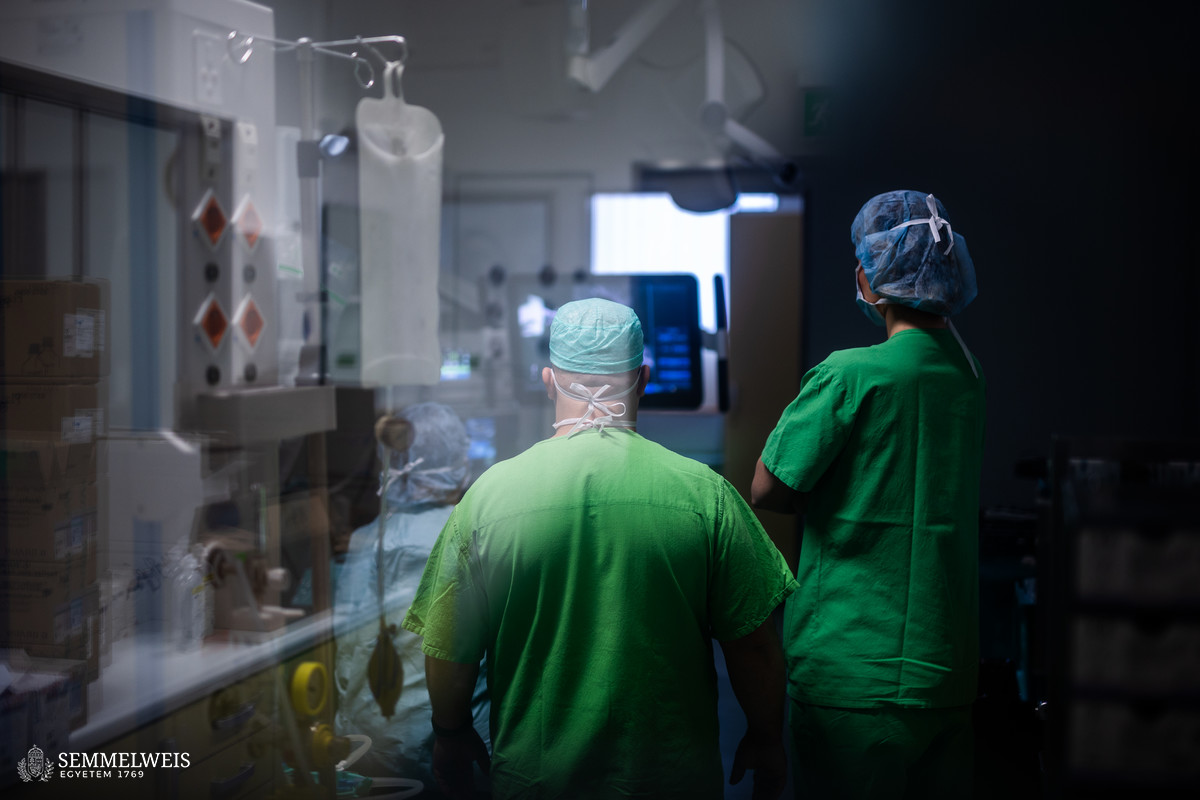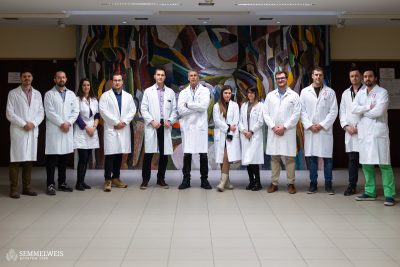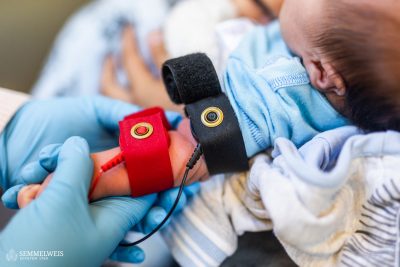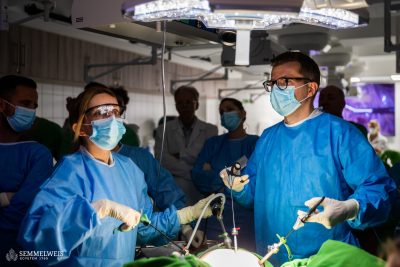“For us, console surgeons, operating with a robot feels as if we were sitting inside the abdominal cavity itself,” Dr. István Szabó, Associate Professor of the Department of Obstetrics and Gynecology explains how it feels to operate using the da Vinci robot. As he points out:
With ten and a half times magnification, we see everything in three dimensions while moving the camera in any direction. And we can turn the delicate instruments anywhere within the abdominal cavity – in a significantly larger range of motion than the human wrist – with the help of two “joysticks” (masters)
The head of the operating room and endoteam of the clinic’s Üllői Street unit performed the first two robot-assisted endometriosis surgeries at Semmelweis University at the end of last year, after obtaining the necessary international certification for this special type of surgery.
Robot-assisted surgery may represent a new type of surgical option for patients suffering from the most severe forms of endometriosis. “Primarily, the advantages of the robot can be made use of in cases in which the various abdominal organs and/or the retroperitoneum (the space located behind the abdominal cavity) are also affected, and when treating the given areas with the highest degree of precision, practically to the millimeter is a must”, highlighted Dr. István Szabó. Using the da Vinci system, the surgeon can see the border of healthy and diseased tissues and the quality of the tissue circulation clearly by changing a camera filter (in a different color with the so-called ICG technique) with the help of the contrast agent administered to the patient. In case of bowel resection, for example, it can be checked whether the pathological tissue has been completely removed, and whether the circulation of the restored organ is adequate.
Endometriosis affects about 200,000 women in Hungary, the vast majority of whom are of childbearing age, and is often the cause of infertility. During the course of the disease, the mucous membrane, which is normally located only inside the uterus, also appears in other places, such as in the abdominal cavity, on the peritoneum, on the ovary, or it can also affect the intestines and bladder, among others. The most serious type of the disease, the so-called deeply infiltrating endometriosis makes up approximately a fifth of all cases.
This technique is routinely used, e.g. also in the case of uterine cancer, as it allows us to meticulously remove only the diseased lymph nodes (Sentinel technique), said Dr. István Szabó. It is possible to view the patient’s medical history and image documentation at the press of a button by sharing the screen during surgery, without the surgeon even changing his position in the console, thus providing considerable assistance to the operator.
The robotic system is also suitable for multidisciplinary surgery, as the university has acquired a double console system, making it possible for two surgeons to sit next to each other in the control unit. Thus, if necessary, the other console surgeon can take over or hand over the operation with the push of a button, pointed out Dr. István Szabó.
In endometriosis cases, this can be particularly useful if, for example, due to the extreme extent of the disease, other allied professions (e.g. thoracic surgeon) are also needed, he added. Thanks to the double console solution, it is also excellent for training. According to the associate professor, there is practically always a doctor, a resident or a specialist, who intends to learn detailed anatomy, dissection methods, or maybe operate with da Vinci in the future, sitting next to the robot during the operations.
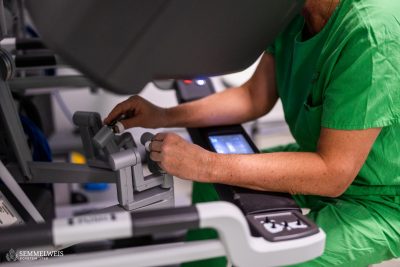 During the intervention, the console surgeon sits in the control unit a few meters away from the operating table, however, there is not a single moment of the process that the surgeon does not control. This person directs the four-armed robot standing above the operating table with the help of a total of seven pedals and two masters (joysticks), pointed out Dr. István Szabó. A few small incisions are made on the patient in the same way as in the case of laparoscopic surgery, through which the necessary devices at the end of the robotic arms and the camera are inserted. In addition to the fact that the robot-assisted technique can increase the surgical efficiency and effectiveness in cases requiring the greatest precision, da Vinci is also much more ergonomic and comfortable for the doctor, thus enabling even more focused work, especially for procedures lasting several hours.
During the intervention, the console surgeon sits in the control unit a few meters away from the operating table, however, there is not a single moment of the process that the surgeon does not control. This person directs the four-armed robot standing above the operating table with the help of a total of seven pedals and two masters (joysticks), pointed out Dr. István Szabó. A few small incisions are made on the patient in the same way as in the case of laparoscopic surgery, through which the necessary devices at the end of the robotic arms and the camera are inserted. In addition to the fact that the robot-assisted technique can increase the surgical efficiency and effectiveness in cases requiring the greatest precision, da Vinci is also much more ergonomic and comfortable for the doctor, thus enabling even more focused work, especially for procedures lasting several hours.
The first gynecological surgery supported by da Vinci robotic surgical system was performed at Semmelweis University on July 4, 2022, by Chief Clinical Physician Dr. Balázs Lintner. Since then, more than 220 such interventions have been carried out in this field, mainly in the case of oncological diseases, as well as benign diseases where there were aggravating circumstances (e.g. severe obesity, severe myomatosis). The first two endometriosis surgeries in December were followed by two more in January. Dr. István Szabó plans to perform 20 to 30 endometriosis operations this year with the new robotic technique.
Da Vinci at Semmelweis University
The da Vinci robotic surgical system of Semmelweis University was officially handed over in June 2022. The fourth generation da Vinci Xi robot, representing the most advanced technology, was inaugurated at the university’s Department of Surgery, Transplantation and Gastroenterology (STéG). Robotic technology is currently mainly used in abdominal surgery, gynecological and urological interventions. In addition, thanks to its two-console solution, it also plays a role in education. The first da Vinci robot-assisted surgery took place at the university in May 2022, which was a gallbladder removal, performed by Dr. Attila Szijártó, Director of STéG. The National Health Insurance Fund of Hungary currently finances the performance of 400 robot-assisted surgeries per year at Semmelweis University.
Pálma Dobozi
Translation: Mária Sánta
Photo: Bálint Barta – Semmelweis University
